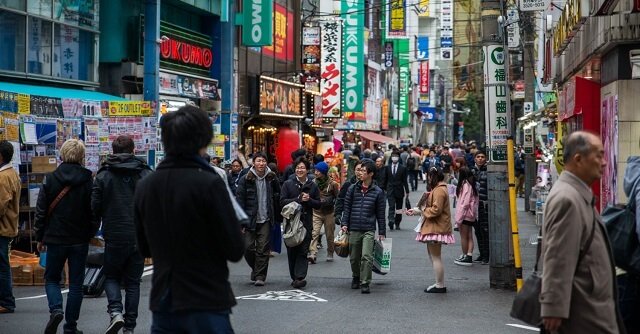
Mention Akihabara and geeks from all over the world will get a dreamy look in their eyes. Here’s the story of how the district evolved into the paradise of Otaku Culture.
-
The Akihabara district in Eastern Tokyo is well known for being the epicentre of the Japanese otaku-culture. Within a few blocks you’ll find hundreds of shops selling manga, anime, videogames and plastic figures of the stars from those imaginary worlds.
![Akihabara]()
Akihabara
The history of modern Akihabara arguably started about around 70 years ago. Japan had just suffered a defeat by the allied forces in the Second World War. Countless servicemen were called back home to Japan, among them many radio technicians and engineers. For many of those people, finding work was a difficult task — their expertise was based on the needs in the military, and now they were supposed to serve civil society.
![Akihabara]()
Akihabara
![]()
![]()
This coincided with the golden age for radio in Japan. More than 50 stations were broadcasting everything from news to entertainment to millions of listeners all over the country. Many of the engineers who served in the war started gathering in the area surrounding Akihabara station, a neighborhood that up until now mostly was famed for its big fruit and vegetables market. They set up shop specializing in repairing and building radio receivers. This also created a need for suppliers of the components that was required to do this. The foundation to modern day Akihabara had been laid.
![Akihabara]()
Akihabara
In the early 1960s, a bill prohibiting street vending was passed. This forced some of the radio vendors to gather together in a two storey building dubbed Radio Kaikan (literally meaning “radio meeting hall”). Their businesses expanded, and within a few years they had outgrown the building. In 1962, a new building, a whopping eight stories high, was finished. This new Radio Kaikan became the first modern high rise building in Akihabara. Around this time, shops selling other white goods, such as refrigerators and televisions also started to move in. Akihabara had evolved into the biggest gathering spot for the entire Japanese electronics industry, and the neighborhood got the nickname “Electric Town”, that still sticks with it today.
![Akihabara]()
Akihabara
In coming decade, personal computers started to become popular in Japan. The first shops specializing in this hot new piece of hardware started to appear in Akihabara in the 1970s. As the popularity soared it didn’t take long until PC shops were dominating the neighborhood.
During the 80’s and 90’s the PC market grew even stronger, and thanks to the introduction of Nintendo’s Famicom, Japan also became the leading producer of video games. Akihabara evolved into the center for this new form of digital entertainment. Some former PC stores started specializing in games and some of them switched their focus completely from hardware to software.![Akihabara]()
Akihabara
But what about manga? No one knows for certain when the first shop specializing in comics appeared in Akihabara, but one important event took place in 1994, when a former employee of one of the PC stores opened Tora No Ana, a store specializing in Dojinshi (self-published) manga. Today Tora no Ana is a big chain with two stores, including a seven storey one, in Akihabara alone, and several more all over Japan.
The original Radio Kaikan building was demolished in 2011 as it was old and deemed unsafe by the authorities. In 2014 a new building was completed. The shops inside have very little to do with radios though, these days it’s entirely focused on modern day otaku goods, but the name of the building remains the same as a nod to its heritage. Radio Kaikan (http://www.akihabara-radiokaikan.co.jp/) is located just across the street from JR Akihabara station and a good starting point for the first-time visitor to Akihabara.![Akihabara]()
Akihabara
But it’s still possible to experience the heritage of the bygone times. Under the elevated railroad tracks there’s a building filled with smaller market style vendors still specializing in electronics components like LED lights, transistors and all possible sorts of connection plugs. It’s well worth a visit just to get a feeling of what this area might have been like a few decades ago. Just a word of warning though – make sure to ask the shop owners before you take any photos of them (or their products), it seems like some of them are not too happy about being treated like tourist attractions.
![Akihabara]()
Akihabara
![]()
![]()
The stores in Akahabara are open 7 days a week. Opening times varies, but generally most stores open around 10:30 or 11:00 and stay open until 19:30 or 20:00. Some bigger shops, game centers and restaurants stay open later.
Access: JR Akihabara Station (Yamanote Line, Sobu Line, Keihin Tohoku line) Subway: Hibiya line Akihabara Station. Suehirocho station on Ginza Line is also located in Akihabara and the fastest way to get there if you’re coming from Shibuya.JR-EAST HOTEL METS AKIHABARA
1-17-4 Sotokanda, Chiyoda-ku Tokyo

- Akihabara Radio Hall
-
-
- Tokyo Chiyoda-ku Sotokanda 1-15-16
-
-
-
- 10:00-20:00[B1F Restaurant]1…
-
View AllAnshin Oyado Tokyo Akihabara Denkigai - Male Only
1-2-12 Sotokanda, Chiyoda-ku Tokyo

- とらのあな 秋葉原店A
-
-
- 東京都千代田区外神田4-3-1
-
-
-
- 08001004315
-
View All
-












 Go here
Go here
















